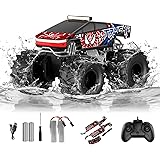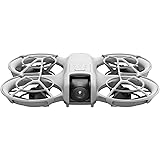The intricate world of logistics, often hailed as the true backbone of global civilization, frequently faces immense challenges. Conventional shipping methods can be slow, expensive, and limited in their ability to reach remote or difficult terrains. Businesses, aid organizations, and even defense sectors continually seek innovative solutions to bridge geographical gaps and deliver vital supplies with unprecedented speed and efficiency. The demand for faster, more reliable, and accessible express shipping is growing exponentially, driven by e-commerce demands and critical supply chain needs.
The video above offers a compelling glimpse into one such groundbreaking solution: the Elroy Air Chaparral, a heavy-lift delivery drone designed to revolutionize air cargo. This innovative aircraft promises to mitigate significant risks associated with traditional logistics, improving both the speed and reach of express shipping. By leveraging advanced autonomous drone technology, companies like Elroy Air are actively developing systems that can seamlessly integrate into existing supply chains while opening up entirely new possibilities for freight delivery.
The Dawn of Heavy-Lift Delivery Drones and Autonomous Air Cargo
When considering advanced aircraft like the Chaparral, it’s easy to focus solely on the impressive physical machine. However, as highlighted in the video, the true innovation behind these heavy-lift delivery drones lies in years of rigorous testing, meticulous analysis, thoughtful design, and extensive experimentation. This dedication ensures that every component and system within the aircraft is optimized to mitigate risk to the maximum extent possible. The development process involves a confluence of brilliant minds from aerospace, robotics, and logistics, all collaborating to push the boundaries of what’s achievable in autonomous freight.
These robust development cycles are crucial for building trust and ensuring reliability in an entirely new mode of transport. For instance, according to a report by Statista, the global drone logistics and transportation market is projected to reach approximately 40.5 billion U.S. dollars by 2027, showcasing significant growth potential. Such growth is underpinned by rigorous safety protocols and technological advancements that guarantee operational security. The meticulous engineering behind these systems directly addresses concerns about autonomous flight and public safety, making them viable for commercial deployment.
Mitigating Risks Through Advanced Drone Technology
Risk mitigation is paramount in the development of any aircraft, especially for autonomous systems operating in complex environments. Elroy Air, like many pioneers in the field, invests heavily in sophisticated flight control systems, redundant safety features, and comprehensive testing regimes. This includes simulating various failure scenarios and environmental conditions to ensure the aircraft can operate safely and reliably. Furthermore, the integration of advanced sensor suites allows these unmanned aerial vehicles (UAVs) to navigate dynamically, detect obstacles, and respond autonomously to changing conditions, far beyond human reaction times.
The focus on robust, fault-tolerant design minimizes the likelihood of operational incidents. For example, some heavy-lift drones incorporate multiple redundant propulsion systems, meaning that even if one motor fails, the aircraft can safely continue its mission or perform a controlled landing. This level of engineering detail reassures stakeholders that autonomous air cargo is not only efficient but also exceptionally safe. Such commitment to safety is a cornerstone for the widespread adoption of drone logistics across various industries.
Transforming Express Shipping: Speed, Reach, and Capacity
The core promise of heavy-lift delivery drones like the Chaparral is to dramatically improve the speed and reach of express shipping. Traditional ground-based logistics are often hampered by traffic congestion, geographical barriers, and limited infrastructure in remote areas. Air cargo, while faster, typically relies on large airports and costly operations, making it unsuitable for last-mile or regional express deliveries.
This is where autonomous air cargo bridges the gap, offering unparalleled advantages. Imagine a scenario where a drone can carry up to 500 pounds of essential supplies directly from a distribution hub to a remote location that lacks roads or airstrips, bypassing challenging terrain entirely. This capability is not merely about convenience; it’s about enabling critical access. For instance, in disaster relief efforts, the ability to rapidly deploy medical supplies or emergency equipment to isolated communities can be life-saving, circumventing damaged infrastructure.
Unlocking New Possibilities in Freight Forwarding
The capacity to carry significant payloads, such as 500 pounds, positions these heavy-lift delivery drones for a wide array of applications beyond typical small package delivery. This substantial capacity makes them suitable for mid-mile logistics, connecting regional warehouses or delivering larger, bulkier items that are not feasible for smaller drones. The potential for optimizing supply chains by creating a dense network of autonomous air routes is immense.
Additionally, the operational cost efficiencies gained by removing the need for pilots and reducing fuel consumption compared to traditional helicopters or small planes can be substantial. This makes autonomous freight an economically attractive option for businesses looking to streamline their logistics operations. The advent of these powerful delivery drones marks a significant evolutionary step in freight forwarding, promising a future where goods move faster and further than ever before.
Logistics: The Indispensable Lifeblood of Civilization
As one speaker in the video aptly puts it, “logistics is the lifeblood of civilization.” This statement underscores the fundamental importance of an efficient and resilient supply chain for societies to function and thrive. From delivering food and medicine to transporting manufacturing components and consumer goods, seamless logistics ensures that economies can operate, and communities can access necessary resources. However, global events have frequently exposed the vulnerabilities and limitations of existing logistical frameworks, highlighting the urgent need for robust alternatives.
The challenges can range from congested urban areas that delay critical deliveries to remote regions cut off by natural disasters. Furthermore, humanitarian aid organizations often struggle with the “last mile” problem, where getting supplies from a central hub to those most in need is incredibly difficult and dangerous. Heavy-lift delivery drones present a powerful solution to these persistent problems. They can directly address inefficiencies by reducing transit times and offering direct delivery pathways, bypassing traditional bottlenecks that cripple conventional transport systems.
Bridging Gaps and Empowering Communities
The ability of autonomous drones to bridge geographical and infrastructural gaps has profound societal implications. For instance, in developing regions, establishing robust logistics networks is often hindered by a lack of paved roads or unreliable transport services. Heavy-lift delivery drones offer a cost-effective and immediate solution, enabling communities to access vital goods and services without massive investments in ground infrastructure. This capacity for direct access can significantly improve quality of life and foster economic development in previously isolated areas.
Moreover, the environmental benefits of transitioning to electric or hybrid autonomous freight systems are significant. By reducing reliance on fossil fuels and optimizing flight paths, these delivery drones can contribute to a greener logistics industry. This aligns with global efforts to reduce carbon emissions and build more sustainable supply chains, demonstrating that efficiency and ecological responsibility can go hand-in-hand.
Real-World Applications and Expanding Impact
The practical applications for heavy-lift delivery drones extend across numerous sectors, promising transformative impact. One prominent area is humanitarian aid and disaster relief. In the aftermath of a natural disaster, roads are often impassable, and conventional airfields might be destroyed. Drones can quickly deliver emergency food, water, medical supplies, and even satellite communication equipment to affected populations, cutting down response times significantly. This rapid deployment can literally save lives when every minute counts.
Another crucial application lies in e-commerce and retail logistics, particularly for rural or hard-to-reach customers. While smaller drones can deliver light packages, heavy-lift capabilities enable the delivery of bulkier items, construction materials, or even components for industrial operations directly to job sites or remote facilities. This expands the reach of online retailers and ensures faster fulfillment, meeting the growing consumer demand for expedited shipping regardless of location.
Shaping the Future of Commercial and Industrial Supply Chains
Beyond emergency response and consumer delivery, the industrial sector stands to benefit immensely. Mining operations, oil and gas platforms, and remote construction projects often require specialized parts or equipment delivered urgently to maintain operations. Traditional logistics for these remote sites can be incredibly expensive and time-consuming. Heavy-lift delivery drones provide an agile and cost-effective alternative for these critical supply lines.
Furthermore, defense and security applications are also significant. Drones can transport vital equipment, munitions, or medical supplies to forward operating bases without risking human pilots in dangerous zones. The versatility and robustness of these autonomous systems make them invaluable assets in securing efficient and safe logistical support. The ongoing development of heavy-lift delivery drones is not just about moving goods; it’s about redefining operational capabilities across a multitude of industries.
Pioneering the Next Era of Autonomous Freight
The future of logistics is undoubtedly shifting towards greater autonomy and aerial solutions. Companies like Elroy Air are at the forefront of this evolution, demonstrating that years of dedicated research and development can yield truly revolutionary heavy-lift delivery drones. The commitment of experts in aerospace, robotics, and logistics to improve the speed and reach of express shipping is a testament to the transformative power of innovation.
As these technologies mature, we can anticipate a future where supply chains are more resilient, efficient, and capable of reaching every corner of the globe. The ability to carry substantial payloads, like 500 pounds, enables these heavy-lift delivery drones to tackle some of the most persistent logistical challenges facing our world today. This new era of autonomous freight promises to make the world a more connected and efficient place, bridging gaps and delivering solutions where they are needed most.











